Comments / Questions (521)
![]() Pia wrote:
Pia wrote:
Når længden på ryg/forstykke måles, er det så incl. de 4 cm. ribkant, ellers skal arbejdet måles fra ribkanten?
04.12.2025 - 20:59
![]() Lonnie wrote:
Lonnie wrote:
Jeg er igang med mc Dreamy sweater i str. 74/80 og undrer mig over at jeg skal slå 52 masker op til rib på ærmet. For mig ser det ud til at passe en voksen. Kan det passe?
03.12.2025 - 19:37DROPS Design answered:
Hej Lonnie, husk at du strikker ribben på pind 2,5 og at ribben vil trække sig sammen :)
04.12.2025 - 13:59
![]() Pia wrote:
Pia wrote:
Når længden på ryg/forstykke måles, er det så incl. de 4 cm. ribkant, ellers skal arbejdet måles fra ribkanten.
30.11.2025 - 09:52
![]() Gabriella wrote:
Gabriella wrote:
Sono arrivata allo sprone ma non capisco bene come proseguire. Le spiegazioni non sono chiare, avete un video sull'argomento. Grazie
10.11.2025 - 01:09DROPS Design answered:
Buonasera Gabriella, nella sezione video del modello può vedere la lavorazione dello sprone con raglan. Buon lavoro!
10.11.2025 - 20:32
![]() Karin wrote:
Karin wrote:
Ik begrijp het bovenste gedeelte van de pas niet. Ik kom niet aan 28 cm lengte (kleinste maat) als ik alles heb geminderd. Moet ik nu gewoon doorbreien tot 28 cm? Ik zie in de vragen dat meer mensen hier moeite mee hebben maar er staat geen Nederlandse oplossing tussen.
04.11.2025 - 18:33DROPS Design answered:
Dag Karin,
Je kunt inderdaad gewoon door breien tot de juiste lengte, zonder te minderen.
05.11.2025 - 19:06
![]() Vibeke Nielsen wrote:
Vibeke Nielsen wrote:
Drenge trøje med knap i siden
31.10.2025 - 10:44
![]() Eglė wrote:
Eglė wrote:
Hello. After I put on stitch holder neckline stitches and finish casting off for neckline on left side of the neck, what do I do with 3 stitches left on right side of the neckline? Im knitting 1/3 size
30.09.2025 - 18:45DROPS Design answered:
Dear Eglė, you should have the same number of stitches on each shoulder before casting off to shape the neckline. So you work both sides of the neck in the same way. In both cases, the remaining stitches are slipped onto a stitch holder. Then, you work the raglan edges and then you pick up stitches for the neck. Happy knitting!
05.10.2025 - 23:22
![]() Eglė wrote:
Eglė wrote:
Hello. After I put on stitch holder neckline stitches and finish casting off for neckline on left side of the neck, what do I do with 3 stitches left on right side of the neckline? Im knitting 1/3 size
30.09.2025 - 18:45
![]() Brigitte wrote:
Brigitte wrote:
Pour le modèle MC Dreamy, je ne comprends pas le montage du col : "relevez 20 à 28 m le long de l'encolure de chaque côté" j'ai ,la bordure du raglan,2m, un espace (1fois 2m rabattues et 1 fois 1m rabattue), 16 m laissées en attente du milieu devant , un espace(m rabattues), 5 m, 14m de la manche, 30 m du dos, 12m de la manche, la bordure du raglan. ou relever ces 20 à 28m ? merci
13.09.2025 - 22:22DROPS Design answered:
Bonjour Brigitte, vous allez relever vos mailles le long de l'encolure = les mailles mises en attente (14 à 22 mailles selon la taille) + vous relevez dans les mailles rabattues (1 x 2 m + 1 x 1 m) de chaque côté; vous relevez en plus 6 mailles le long de chacune des bordures des raglans + vous reprenez les 28-42 mailles qui restaient à la fin de l'empiècement. Ajustez votre nombre de mailles pour qu'il soit divisible par 4 (soit entre 100 et 128 environ). Bon tricot!
15.09.2025 - 08:20
![]() Linda wrote:
Linda wrote:
Hello I am confused by the yoke instruction for the neckline. If I slip the 22 centre stitches on a stitch holder at 30 cm this leaves me with only 2 rows to knit so how can it grow to 34 cm ? There will only be 3 stitches left on the right hand side of the raglan opening.
05.09.2025 - 21:59DROPS Design answered:
Dear Linda, that's right on the side towards opening on front piece you will have just a few stitches left after neckline. Happy knitting!
05.11.2025 - 08:00
McDreamy#mcdreamysweater |
|||||||
|
|
|||||||
Knitted sweater with textured pattern and raglan sleeve for baby and children in DROPS BabyMerino
DROPS Baby 21-15 |
|||||||
|
PATTERN: See diagrams M.1 to M.3. Diagrams show the pattern from RS. DECREASING TIP (applies to raglan): FROM RS: At beg of row: 1 edge st, slip 1 st as if to K, K1, psso. At the end of row, beg when 3 sts remain: K2 tog, 1 edge st. By the other 3 markers dec as follows in each transition between sleeve and body piece, beg 3 sts before marker: K2 tog, K2 (marker sits between these 2 sts), slip 1 st as if to K, K1, psso. FROM WS: At beg of row: 1 edge st, P2 tog. At the end of row, beg when 3 sts remain: P2 tog into back of loop, 1 edge st. By the other 3 markers dec as follows in each transition between sleeve and body piece, beg 3 sts before marker: P2 tog into back of loop, P2 (marker sits between these 2 sts), P2 tog. GARTER ST (back and forth on needle): K all rows. -------------------------------------------------------- -------------------------------------------------------- BODY PIECE: Worked in the round on circular needle. Cast on 148-168-184 (204-216) sts on circular needle size 2.5 mm / US 1 with Baby Merino. K 1 round and continue in rib, K2/P2. When rib measures 4 cm / 1½" K 1 round, AT THE SAME TIME dec 28-32-32 (36-40) sts evenly = 120-136-152 (168-176) sts. Insert 1 marker at beg of round and 1 marker after 60-68-76 (84-88) sts (= the sides). Change to circular needle size 3 mm / US 2or3 and continue in stockinette st. REMEMBER THE GAUGE! When piece measures 14-15-18 (20-23) cm / 5½"-6"-7" (8"-9") work chart M.1 on all sts. After M.1 continue in chart M.2 on all sts. AT THE SAME TIME when piece measures 17-18-21 (24-27) cm / 6¾"-7"-8¼" (9½"-10⅝") work next round as follows: bind off 4 sts for armhole, work 52-60-68 (76-80) sts (= front piece), bind off 8 sts for armhole, work 52-60-68 (76-80) sts (= back piece) and bind off the last 4 sts for armhole. Cut the thread and put piece aside. Knit the sleeves. SLEEVE: Worked in the round on double pointed needles. Cast on 44-48-52 (56-60) sts on double pointed needles size 2.5 mm / US 1 with Baby Merino. K 1 round and continue in rib, K2/P2. When rib measures 4 cm / 1½" K 1 round, AT THE SAME TIME dec 10-12-14 (16-16) sts evenly = 34-36-38 (40-44) sts. Insert a marker at beg of round = mid under sleeve. Change to double pointed needles size 3 mm / US 2or3 and continue in stockinette st. When piece measures 6 cm / 2⅜" inc 1 st on each side of marker. SIZE 1/3 months + 6/9 months: Repeat the inc on every 4th round a total of 7-8 times. SIZE 12/18 months + 2 years: Repeat the inc on every 4th and 5th round alternately a total of 9 (12) times. SIZE 3/4 years: Repeat the inc on every 6th round a total of (12) times. = 48-52-56 (64-68) sts. AT THE SAME TIME when piece measures 13-14-17 (20-24) cm / 5⅛"-5½"-6¾" (8"-9½") work M.1. After M.1 continue in M.2. When piece measures approx 16-17-20 (24-28) cm / 6¼"-6¾"-8" (9½"-11") – make sure to be on the same row in M.2 as on body piece – bind off 8 sts mid under sleeve (= 4 sts each side of marker) = 40-44-48 (56-60) sts left on needle. Put piece aside and knit the other sleeve. YOKE: Slip sleeves on the same circular needle as body piece where bind off for armhole = 184-208-232 (264-280) sts. Insert a marker in all transitions between sleeves and body piece and insert a marker mid front (= 26-30-34 (38-40) sts each side). READ ALL OF THE FOLLOWING SECTION BEFORE CONTINUING! Continue back and forth on needle from the raglan on right front piece (when garment lies flat in front of you). Beg by casting/binding off 3 sts on each side of this raglan opening. Continue in M.2 with 1 edge st each side (make sure pattern continues from body piece and sleeves). After 6-6.5-7 (8-8.5) cm / 2⅜"-2½"-2¾" (3⅛"-3¼") of M.2 work M.3 and then complete piece in M.2. AT THE SAME TIME on first row from RS dec 1 st for raglan on each side of all markers – SEE DECREASING TIP! Repeat the dec on every other row a total of 13-15-16 (15-16) times and then on every row: 0-0-1 (6-7) times. AT THE SAME TIME when piece measures 24-26-30 (34-38) cm / 9½"-10¼"-11¾" (13⅜"-15") slip the middle 14-18-22 (22-22) sts on front piece (i.e. 7-9-11 (11-11) sts on each side of marker mid front) on a stitch holder for neck and complete each side separately. Bind off to shape the neckline at the beg of every row from mid front: 2 sts 1 time and 1 st 1 time. After all dec for raglan and neck are complete there are approx 54-58-62 (62-62) sts left on needle and piece measures approx 28-30-34 (38-42) cm / 11"-11¾"-13⅜" (15"-16½") up to shoulder. Slip sts on a stitch holder and work the raglan edges before the neckline. RAGLAN EDGE: Pick up approx 24 to 36 sts (divisible by 4) inside 1 edge st along the raglan opening on sleeve on needle size 2.5 mm / US 1 with Baby Merino. Work rib K2/P2 with 1 garter st and K2 each side (as seen from RS). When edge measures 2 cm / ¾" bind off with K over K and P over P. Repeat along raglan opening on front piece, but after 2 rows make 3 buttonholes evenly (the last buttonholes is made on neck). 1 buttonhole = bind off 2 sts and cast on 2 new sts on return row. NECK: Slip sts from stitch holder mid front and on yoke back on circular needle size 2.5 mm / US 1, pick up approx 20 to 28 sts on each neckline at front and pick up 6 sts on each raglan edge with Baby Merino = approx 100 to 128 sts (divisible by 4). Work rib back and forth on needle from raglan opening as follows (as seen from RS): 1 garter st, * K2/P2 *, repeat from *-* and finish with K2 and 1 garter st. AT THE SAME TIME after 2 rows make 1 buttonhole in line with the others on raglan edge and when neck measures 4.5 cm / 1¾" make 1 buttonhole over the first one. Work another 2 rows and bind off with K over K and P over P. ASSEMBLY: Fold neck double towards WS and fasten with neat sts. Sew raglan edges to bottom of raglan openings. Sew openings under sleeves. Sew on buttons. |
|||||||
Diagram explanations |
|||||||
|
|||||||
 |
|||||||
Have you finished this pattern?Tag your pictures with #dropspattern #mcdreamysweater or submit them to the #dropsfan gallery. Do you need help with this pattern?You'll find 24 tutorial videos, a Comments/Questions area and more by visiting the pattern on garnstudio.com. © 1982-2025 DROPS Design A/S. We reserve all rights. This document, including all its sub-sections, has copyrights. Read more about what you can do with our patterns at the bottom of each pattern on our site. |
|||||||











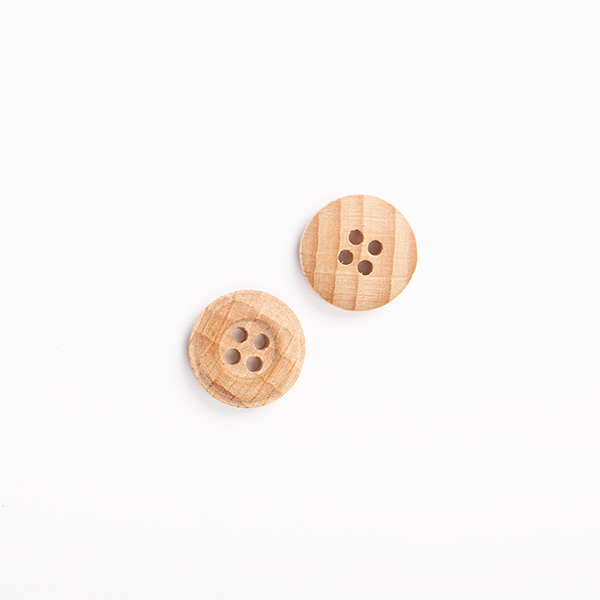


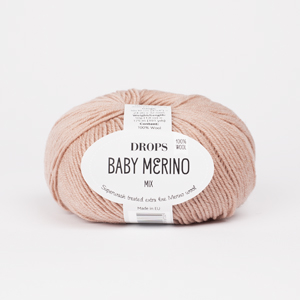
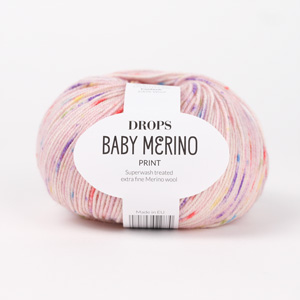










































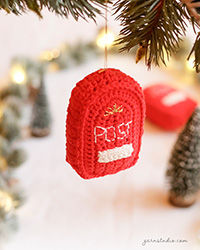
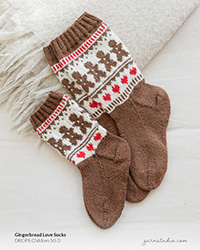

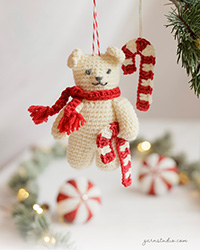
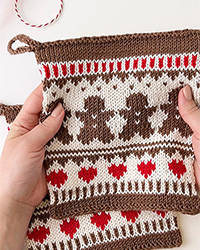
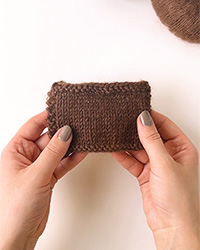
Post a comment to pattern DROPS Baby 21-15
We would love to hear what you have to say about this pattern!
If you want to leave a question, please make sure you select the correct category in the form below, to speed up the answering process. Required fields are marked *.